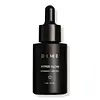What's inside
What's inside
 Key Ingredients
Key Ingredients

 Benefits
Benefits

 Concerns
Concerns

No concerns
 Ingredients Side-by-side
Ingredients Side-by-side

Water
Skin ConditioningAloe Barbadensis Leaf Juice
Skin ConditioningGlycerin
HumectantSodium Ascorbyl Phosphate
AntioxidantArginine
MaskingFerulic Acid
AntimicrobialTerminalia Ferdinandiana Fruit Extract
AntioxidantGeranium Maculatum Extract
TonicEquisetum Arvense Extract
AstringentHamamelis Virginiana Water
AstringentTaraxacum Officinale Extract
Skin ConditioningCentella Asiatica Extract
CleansingTamarindus Indica Seed Polysaccharide
Skin ConditioningDimethyl Sulfone
SolventCamellia Sinensis Leaf Extract
AntimicrobialSimmondsia Chinensis Seed Oil
EmollientPropanediol
SolventSodium Benzoate
MaskingCarrageenan
Sclerotium Gum
Emulsion StabilisingCitric Acid
BufferingBenzoic Acid
MaskingSodium Dehydroacetate
PreservativeLonicera Caprifolium Flower Extract
PerfumingLonicera Japonica Flower Extract
Skin ConditioningWater, Aloe Barbadensis Leaf Juice, Glycerin, Sodium Ascorbyl Phosphate, Arginine, Ferulic Acid, Terminalia Ferdinandiana Fruit Extract, Geranium Maculatum Extract, Equisetum Arvense Extract, Hamamelis Virginiana Water, Taraxacum Officinale Extract, Centella Asiatica Extract, Tamarindus Indica Seed Polysaccharide, Dimethyl Sulfone, Camellia Sinensis Leaf Extract, Simmondsia Chinensis Seed Oil, Propanediol, Sodium Benzoate, Carrageenan, Sclerotium Gum, Citric Acid, Benzoic Acid, Sodium Dehydroacetate, Lonicera Caprifolium Flower Extract, Lonicera Japonica Flower Extract
Water
Skin ConditioningAscorbic Acid
AntioxidantEthoxydiglycol
HumectantGlycerin
HumectantTocopherol
AntioxidantFerulic Acid
AntimicrobialLecithin
EmollientHyaluronic Acid
HumectantVitis Vinifera Seed Extract
AntimicrobialResveratrol
AntioxidantAloe Barbadensis Leaf Juice
Skin ConditioningMagnolia Officinalis Bark Extract
AntimicrobialXanthan Gum
EmulsifyingSodium Metabisulfite
AntioxidantPhenylpropanol
MaskingSodium Hydroxide
BufferingEthylhexylglycerin
Skin Conditioning
 Reviews
Reviews

Ingredients Explained
These ingredients are found in both products.
Ingredients higher up in an ingredient list are typically present in a larger amount.
Aloe Barbadensis Leaf Juice comes from leaves of the aloe plant. Aloe Barbadensis Leaf Juice is best known for helping to soothe sunburns. It is also anti-inflammatory, moisturizing, antiseptic, and can help heal wounds.
Aloe is packed with good stuff including Vitamins A, C, and E. These vitamins are antioxidants, which help fight free-radicals and the damage they may cause. Free-radicals are molecules that may damage your skin cells, such as pollution.
Aloe Barbadensis Leaf Juice also contains sugars. These sugars come in the form of monosaccharides and polysaccharides, folic acid, and choline. These sugars are able to help bind moisture to skin.
It also contains minerals such as calcium, 12 anthraquinones, fatty acids, amino acids, and Vitamin B12.
Learn more about Aloe Barbadensis Leaf JuiceFerulic Acid is a plant based antioxidant. By fighting free-radicals, ferulic acid can help reduce the formation of fine lines and hyperpigmentation.
When used with Vitamin C, Ferulic Acid has shown to prevent Vitamin C from breaking down. In other words, it acts as a stabilizer.
Ferulic Acid is sometimes used to preserve food. Foods containing Ferulic Acid include: oats, rice, eggplant, citrus.
In medicine, Ferulic Acid is being studied for helping with diabetes, Alzheimer's, and cardiovascular diseases.
Learn more about Ferulic AcidGlycerin is already naturally found in your skin. It helps moisturize and protect your skin.
A study from 2016 found glycerin to be more effective as a humectant than AHAs and hyaluronic acid.
As a humectant, it helps the skin stay hydrated by pulling moisture to your skin. The low molecular weight of glycerin allows it to pull moisture into the deeper layers of your skin.
Hydrated skin improves your skin barrier; Your skin barrier helps protect against irritants and bacteria.
Glycerin has also been found to have antimicrobial and antiviral properties. Due to these properties, glycerin is often used in wound and burn treatments.
In cosmetics, glycerin is usually derived from plants such as soybean or palm. However, it can also be sourced from animals, such as tallow or animal fat.
This ingredient is organic, colorless, odorless, and non-toxic.
Glycerin is the name for this ingredient in American English. British English uses Glycerol/Glycerine.
Learn more about GlycerinWater. It's the most common cosmetic ingredient of all. You'll usually see it at the top of ingredient lists, meaning that it makes up the largest part of the product.
So why is it so popular? Water most often acts as a solvent - this means that it helps dissolve other ingredients into the formulation.
You'll also recognize water as that liquid we all need to stay alive. If you see this, drink a glass of water. Stay hydrated!
Learn more about Water